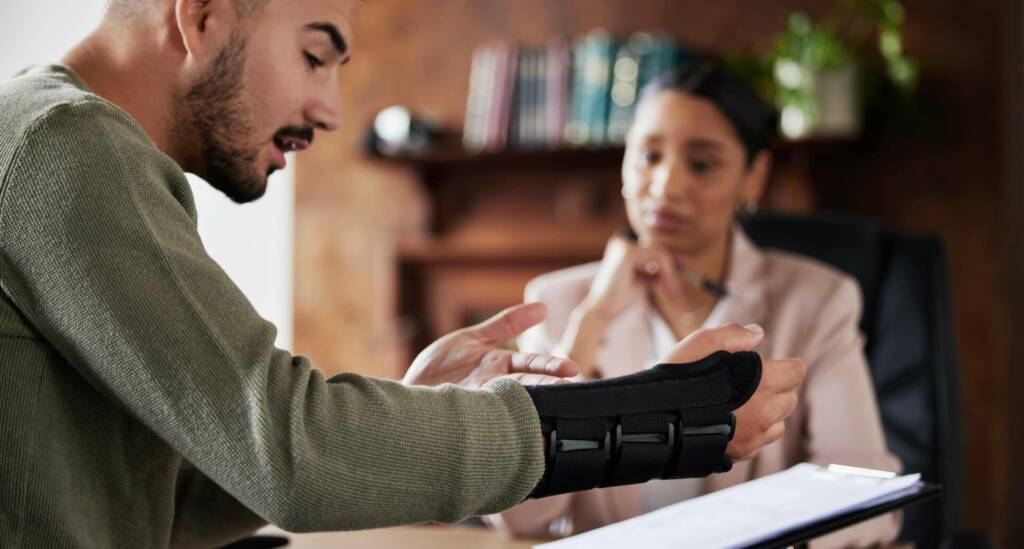While all property owners and occupiers are expected to keep their premises safe for visitors, unfortunately, some don’t do so. When injuries happen due to such negligence, it may result in severe injuries and even disability.
Under legislation across Canada, if you sustain injuries in a slip and fall accident caused by another, you may be eligible for compensation. Generally, the owner of the property where you fell would be at fault. If you were hurt in an unsafe property in Nova Scotia, let the McKiggan Hebert personal injury lawyers help you understand your legal options.
What Type of Injuries Can I Sustain from a Slip and Fall?
Slip and fall accidents may sound mild, but they aren’t. A slip and fall accident in Halifax may involve walking on wet, slippery floors, icy sidewalks, pavements with potholes, improperly secured carpets, or walkways with poor lighting.
Injuries could include:
- Head injuries
- Cuts and lacerations
- Soft tissue injuries
- Bone fractures
- Traumatic brain injuries (TBIs)
- Neck and spinal cord injuries
- Concussions
- Strains
What Is the Law for Slip and Fall in Canada?
Nova Scotia, Alberta, Manitoba, Ontario, and Prince Edward Island rely on the Occupier’s Liability Act legislation when determining fault in a slip and fall incident. Each province’s Act assigns property owners a legal duty to care for persons who enter their property and keep them reasonably safe from harm.
The Act further defines an “Occupier” as someone in physical possession of premises or the person in control over or in charge of activities, the conditions, or people allowed on the premises. In such situations, there can be more than one occupier on a single premises. This, therefore, means there could be more than one party responsible for your slip and fall accident.
What Factors Are Considered When Determining Liability in a Slip and Fall Claim?
Some special considerations will be taken into account when determining liability. They include:
- The age of the person accessing the premises
- Circumstances of entry
- Occupier’s knowledge, or ought to have, of the likelihood of having persons or property being present on the premises
- The ability of the person accessing the premises to acknowledge the danger
- Effort of the occupier to warn or discourage persons from suffering the risk
- The occupier’s expectation to offer some protection to a risk
Generally, one must prove that an owner/occupier acted negligently and did not uphold their legal duty of care. A personal injury lawyer in Halifax who is experienced in slip and fall lawsuits can assess your case and determine if you have a right to compensation based on your unique circumstances.
Exceptions to The Occupier’s Liability Act
If someone entered the premises without the occupier’s permission for purposes of committing an offence, it is assumed they knew all risks, and therefore the occupier can’t be held liable for any accident. Similarly, the provisions of this Act don’t apply to an employer and his/her employees. For employees, they would be expected to pursue a workers’ compensation claim.
Can I Sue a Municipality or City?
Municipalities owe a duty of care to pedestrians. They are expected to ensure pedestrians’ safety while on their properties like parks, public buildings, roads, sidewalks, and walkways. You can sue a municipality with unsafe properties being used by pedestrians.
A municipal property may include property:
- operated by the municipality,
- owned by the municipality and/or
- under the jurisdiction of the municipality.
Determining Liability
Fault may depend on whether the accident occurred on municipal property, governed by the Occupier’s Liability Act, or whether it was on a road or sidewalk under the municipality jurisdiction – governed by Municipal Acts.
Some cases may have liability assigned to a person or company hired by the municipality. For instance, a contractor hired to do maintenance work or repairs.
What Evidence Is Needed to Prove an At-Fault Party?
The more evidence you have, the more likely you will be able to show someone else was responsible for your injuries. Evidence such as pictures of the area of the fall is essential – both close up and wide-area pictures. Photos would carry the majority of proof if they were taken at the time of the fall. Taking photographs that show that you were wearing the right footwear will also reinforce your claim.
Create a medical record right away. Go to the hospital after the fall or see a family doctor and have a record of your injuries. All receipts for incurred costs should be kept safely.
The Insurance Company Has Already Offered Me an Offer. Should I Accept It?
You should always be careful with an insurance company offering you compensation rather quickly. Before accepting any form of settlement, consider the value of your personal injury case, and all the damages you’ve suffered presently and those you’ll suffer in the future. Thus, avoid talking to insurance representatives before talking to your Halifax personal injury lawyer.
It’s best to seek legal advice from an experienced slip and fall lawyer in Halifax for guidance throughout the assessment stage. Qualified doctors and experts should first provide informed opinions on the accident’s long-term effects before accepting any settlement offers.
Receive Legal Guidance and Ensure You Get the Compensation You Deserve
Your potential compensation will depend on your injuries, the amount of evidence of those injuries, and who was liable. Determining who the occupier or owner of a premises is not always a smooth process. A lawyer can determine who the at-fault party is and fight for maximum compensation.
You shouldn’t fight alone when you or a loved one is faced with a slip and fall injury in Nova Scotia. Talk to a compassionate slip and fall lawyer as soon as possible to ensure filing deadlines do not lock you out.














